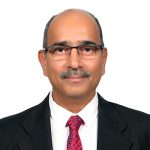Oh My Back!
If you are one of the few lucky ones who have not yet suffered from low back pain,do not be too happy. Second only to common cold, low back pain is increasing in incidence the World over. Almost 80-90% of population is affected by this problem in urban areas and is the commonest cause of absenteeism from work for people under 45 years of age in the Western World. Most suffer for a few days to weeks and in others it becomes a chronic problem with umpteen visits to various specialists,homeopaths, Auervedic massage treatments, acupuncture, magnetotherapy,Rieki etc. In India friends, neighbours, barbers, medical shop owners ,grand mothers are all specialistst have their own special remedies to offer and stories to tell. And of course that consultation with the foreign doctor – when I went to USA and the stories go on!
Who is at risk?
Almost 90% have a mechanical reason for their back pain, and in 10% various diseases and disorders are responsible for low back pain. Many risk factors have been identified : lifting weights beyond a workers physical capability, repeated bending and twisting in awkward positions , prolonged sitting especially in slouched position is well known to produce low back pain. Obesity, cigarette smoking, lack of physical exercise, weak abdominal and back muscles are some of the very potent factors in causing low back pain.
What causes back pain?
The very fact that we are born as humans – our upright posture places tremendous stress and strain on the back.
- bad posture
- prolonged sitting : IT industry/ executives
- Weak abdominal and back muscles
- weak bones ( osteoporosis )
- smoking
- driving 2 wheelers with bad shock absorbers
- over weight
- lack of exercises during and after pregnancy
- un-accustomed bending forwards and lifting weights
Let’s get to know some of the common conditions that cause low back pain:
THE SLIPPED DISC: The human spine consists of individual bones called vertebrae separated by discs- which simply put is a jelly surrounded by fibrous tissue. When the discs get damaged or degenerated, it slips backwards and presses on the spinal cord and nerves causing pain in the lower back or along the leg – known typically as sciatica.
Non surgical management:
Over 90% of patients with slipped discs do not require surgery and get better with rest, physiotherapy and medication. You do not have to sleep on floor or hard beds. A firm bed is all that is required, and rest for more than one week is not advisable. There is no need for strict bed rest and you can move about if pain permits. Exercises should be commenced after the pain subsides and your physiotherapist would be the best person to teach you the exercises to strength the back and abdominal muscles.
The Surgery
Traditional surgeries such as laminectomy have no place in the management of disc prolapse. Surgeries such as Fenestration, Microscopic surgery or Endoscopic microdiscectomy(Key hole surgery) offer the best results. The minimally invasive surgeries do not weaken the back muscles and return to work is much quicker.
SPINAL STENOSIS:
As we get older , the spinal canal gets narrowed due to arthritis and degeneration of tissues in the spine-resulting in pressure on the nerves. Typically the patient may experience low back pain, buttock pain and leg pain. Patients find it difficult to walk for long distances and have to rest after walking for a few minutes. He/she can resume walking once the pain subsides. Majority of the patients get better with change in life styles, physiotherapy and epidural steroid injections in to the spinal canal. Modern surgical techniques once again give lasting relief in those who do not get better with non operative treatments.
SPONDILOLYSTHESIS: This is slipping of one vertebra over the other, resulting in pressure on the nerves and again is responsible for back pain and sciatica. In those who do not get better with non operative measures, surgery offers good relief from pain.
OSTEOPROSIS: Again a common condition in women, is responsible for significant back pain and vertebral fractures. Exposure to sunlight, physical exercise, balanced diet, go a long way in managing this problem. In those who suffer from fractures, minimally invasive procedures such as Vertebroplasty : which is injection of synthetic material (bone cement) under local anaesthesia gives excellent results.
OTHER CONDITIONS: Curvature of spine (hunch back-scoliosis, TB, Cancers and tumors and a variety of disorders can affect a human spine. Prompt consultation and investigations would help in diagnosis and treatment.
Who should be consulted for spine surgery?
Orthopaedic surgeon or Neuro surgeon? That is the doubt in almost everyone’s mind. Traditionally both operate on Spines.Today we have a sub-speciality – Spine Surgery. Spine surgeons are specially trained to perform spine surgeries and it would not be too long when Neuro surgeons would be operating only on Brain and Orthopaedic Surgeons on bone and joints and Spine surgeons alone would be performing Spine surgeries.
Information on the Internet: Beware! Not all information on the net is accurate and current. Newer technologies that appear on the net, are like fashions that keep changing and are industry driven.
Are Spine Surgeries safe?
Spine surgery is complicated and needs expertise. One need not worry too much about the complications and a well planned and well executed surgery in an understanding and cooperative patient gives excellent results.
Is there an age limit?
No! Today we perform spine surgeries on infants to aged persons and age certainly is no bar.
The second opinion?
When in doubt take a second opinion. But seeing too many doctors is quite confusing.
For a healthy back
- Correct your posture – do not slouch
- Get out of your chair every 20 minutes- stand or walk for a few minutes
- Getting out of chair is more important than buying expensive chairs
- Exercise regularly: yoga/walking/swimming/sports
- Quit tobacc

Director and Chief of Spine Surgery
